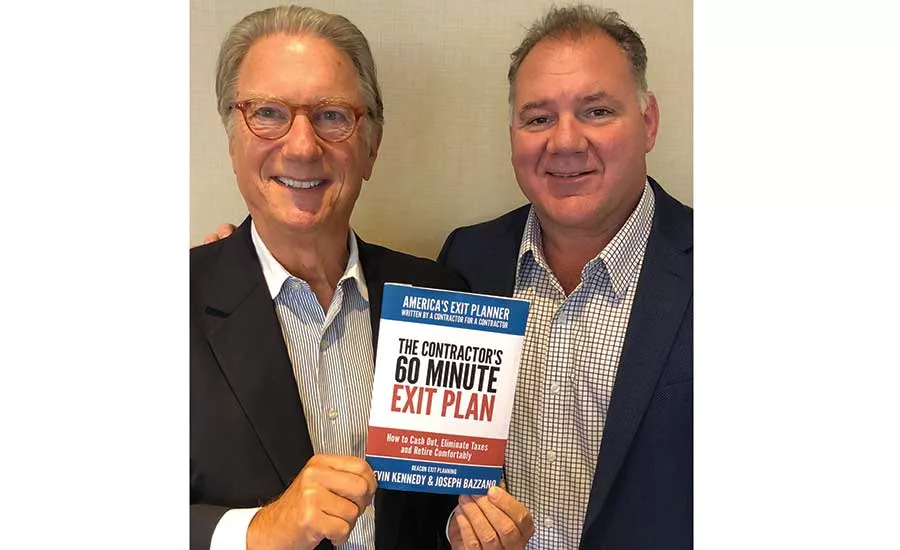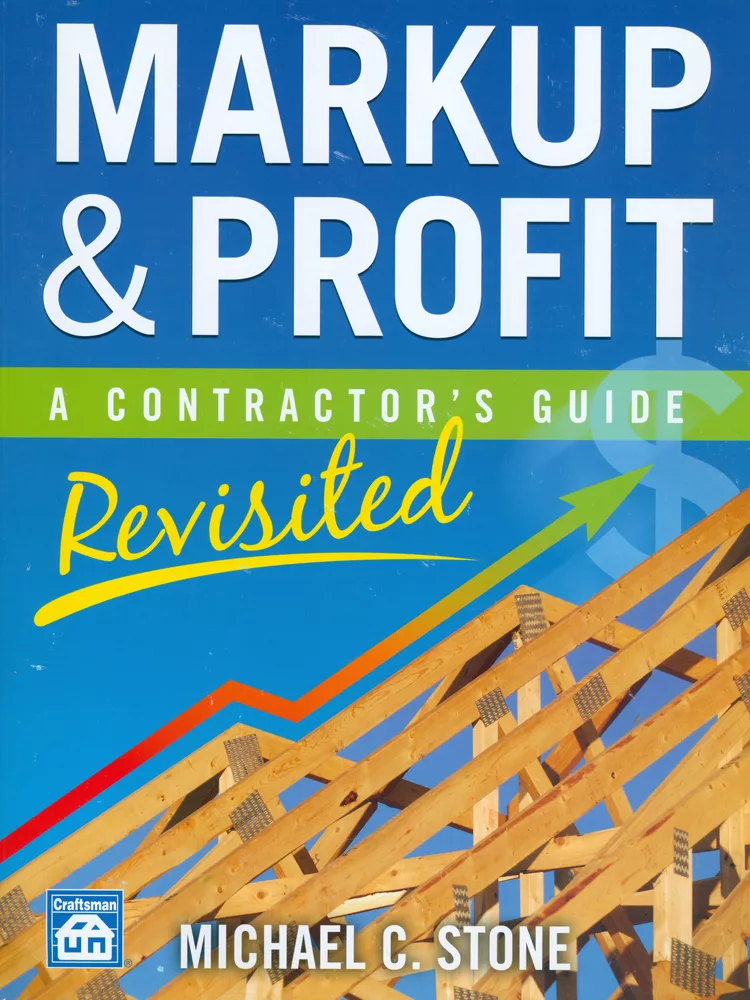Q&A: A Look into "The Contractor's 60 Minute Exit Plan"

Kevin Kennedy and Joe Bazzano's first book, The Contractor's 60 Minute Exit Plan, is a 82-page book offers a guide for roofing contractors to navigate the scary and sometimes treacherous process of exiting their business when the time is right.

Kevin Kennedy and Joe Bazzano's first book, The Contractor's 60 Minute Exit Plan, is a 82-page book offers a guide for roofing contractors to navigate the scary and sometimes treacherous process of exiting their business when the time is right.
Editor’s Note: For this month’s featured Exit Planning entry, RC asked columnists Kevin Kennedy and Joe Bazzano, of Beacon Exit Planning, to discuss the process of releasing their first book, “The Contractor’s 60 Minute Exit Plan.” The 82-page book offers a guide for roofing contractors to navigate the scary and sometimes treacherous process of exiting their business when the time is right.
The business partners turned authors spent the better part of the past year between clients and speaking engagements around the country compiling their best stories, lessons and messages to roofing contractors.
It appears to be paying off. The book was ranked a best seller by Amazon before its September release. Here’s a preview and a little more about how it came together.
RC: Does everyone need an exit plan? When and how do they know?
JB: The tax ramifications of exiting a business can be overwhelming enough but when you consider all of the other attributes of transitioning a business, that can derail a business transfer. I would say that everyone should plan for the exit to some degree. Clearly those that are more dependent on the proceeds of the business to maintain their post exit lifestyle should consider more comprehensive planning and earlier on in the process.
There’s a saying that you don’t know what you don’t know. Using a specialist much like one would use a certain type of lawyer or doctor for a specific transaction so too should a specialist be considered when transitioning a business.
In simple terms every business owner that gets into business should start thinking about their exit strategy. That strategy can take several forms, liquidation, gifting to second generation, sale to employees or to outside party. It’s important to understand that the odds are not in the owner’s favor so setting up the business in a way that makes it transferable is the best investment that an owner can make — unless they choose liquidation for pennies on the dollar.
RC: What’s the biggest misconception roofing contractors, or family business owners have when it comes to succession planning?
KK: The biggest mistake is owners think it is a two- or three-year event that they implement before leaving the company. Ideally, the process should be ongoing but implemented as a program 10-15 years before the owner leaves the company.
This stuff is hard and takes time because you are changing behavior. The process requires education, coaching and stretching to get the managers performing as championship team, then the secret sauce of moving them into leadership and moving the best person into the CEO. Time is your best friend.
RC: What are the important distinctions between a business exit and a business succession?
KK: The simple answer is: Exit planning is about replacing your income without being clobbered by taxes; succession planning is about replacing yourself and creating a championship team and leaders.
The exit plan takes six to nine months to create and another year to three years to implement. The succession plan ideally should be continuous as your build bench strength and professional managers.
Which comes first? My view is the exit plan so the owners has a strategic financial plan to unlock over 70 percent of their illiquid wealth trapped inside their illiquid business — allowing them a clear vision of their financial future and retirement.
Once the exit plan is complete the owner has a clear vision of their financial future and a retirement date allowing them to now concentrate on succession by letting go, teaching, coaching and creating a strong legacy with preparing the future team to lead without their presence.
RC: Why do people confuse the two, and why does it matter?
KK: It is education. Even attorneys, estate planners and accountants say “succession” when they are describing exit planning. It becomes obvious when you are an owner in the trenches trying to understand the taxes, who is going to sit in your chair and what am I going to do in retirement.
Simply, you need a buyer for the company. In construction that will likely sell to you family and managers using a management buyout. You will be tied to the company if they are not prepared to run the business without your presence.
The owner’s legacy in preparing the next generation is the key to buyer’ succeeding and the owner being paid when the managers are running the business.
JB: A key area of concern for the owner is remaining focused. They are busy running the business and oftentimes the planning falls to the wayside, partially because it’s a daunting task and the owner might not be sure where to begin. An exit plan will guide the owner through a series of premeditated steps and strategies to achieve the desired result. Much like a blue print in construction, so too does an exit plan lay out the specifications for getting through the task.
RC: Kevin, you’ve been writing about your personal ‘exit planning’ journey for years, why was now the right time to write this book?
KK: I really wanted to write the book about five years ago and we got so busy that I did not commit the time needed. Joe and I made it a corporate goal in 2018 and executed the plan.
This book is now our business card and part of my legacy when Joe eventually takes control. It’s part of the succession process and our strategic plan.
RC: How long of a process was it, and was it challenging?
KK: It cost our team of three owners over $250,000 and seven years to decide on a management buyout after two offers from consolidators, a broker offer, and exploring an ESOP before using a management buyout to exit. So, yes, the process is challenging, and we were distracted by grinding 60-hour weeks with our growing company with three different owners and goals.
I lived this but was not fully engaged in the process when we were grinding day-to-day and my extensive travel with our national company. I remember the scattered advice from the consolidators, brokers, ESOP advisers, attorney, accounts, insurance agents, financial adviser and estate attorney, but is was advice from different towers, dislocated and uncoordinated.
We did not have anyone juggling all of the moving parts in concert. We are independent unbiased voices of the owners in our exit planning that pulls all the information besides unifying the financial pockets of the business, personal and investment lives so they can clearly see their financial picture in retirement without running out of money.
RC: Would you do it again? Is there a “120-minute” Exit Plan?
KK: No. The reason it’s a 60-minute version is owners do not have a lot of time. Our challenge was not to make them exit planners but for them to understand the challenge of the exit in an hour.
Most of them do not know the risk before them that fewer that 30 percent of owners successfully exit or transfer their business to the next generation. Those that fail to exit usually end up liquidating or settling for 10 percent of the value of their business.
RC: What do you hope roofing contractors come away with after reading it?
KK: Simply to understand the complicated challenge they need to face. They know how to run their business but have never exited before. What got them here, will not get them there.
The book website is www.ContractorExitPlanning.com or it can be found in Amazon Books under “The Contractor 60 Minute Exit Plan.”
Looking for a reprint of this article?
From high-res PDFs to custom plaques, order your copy today!








